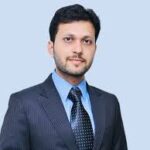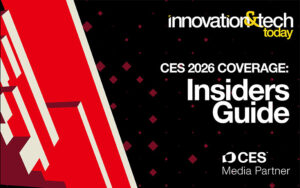The automotive industry is making tremendous advancements in technology after the electric vehicle buzz. Now, it is all about solar-powered cars. Revolutionizing the automotive industry, LightYear solar-powered cars are paving the way toward a greener and more sustainable future.
These innovative vehicles harness the power of the sun to propel us forward into an era of eco-friendly mobility and energy independence. These cutting-edge vehicles combine advanced solar technology with electric mobility to create a clean, efficient, and eco-friendly mode of transportation.
Engineers at LightYear have developed advanced solar panels with enhanced efficiency integrated into the vehicle’s body. Solar cells capture sunlight and convert it into electricity — the key to this innovation is channeling the power to the car’s electric drivetrain and charging the battery as the car is driven.
The LightYear 0, formerly known as LightYear One, is the first production-ready solar-powered vehicle with significant technological advancement. By supplementing an already proven electric battery with solar energy, LightYear cars show impressive ranges that rival their traditional counterparts. The combination of solar power and regenerative braking ensures every bit of energy is captured and utilized to its fullest potential. In addition to solar-powered cells, their lightweight design and aerodynamics further enhance their efficiency, enabling them to go the extra mile without worrying about charging stations.
LightYear Solar Panels
Let’s dive a little deeper into the solar panels used by LightYear 0. Solar panels are made of monocrystalline silicon, which is the most efficient type of solar cell. Panels are very lightweight which improves their efficiency.
With the combination of different factors including the car’s aerodynamic shape and lightweight design, LightYear 0 achieved a drag coefficient of 0.19, which is among the lowest of any production car in the market. It is very aerodynamic and can travel long distances with minimal energy consumption. This is going to be a boon for the future with energy scarcity.
Charging and Range
What concerns most customers is how often a solar-powered vehicle should be charged. The LightYear 0 has a range of 388 miles with a single charge. Its solar panels on the roof and hood can generate about 43 miles per day in ideal conditions.
It has a battery pack with 60KWh capacity. This is a relatively small battery pack compared to any electric cars that are in production, but it is sufficient for the Lightyear 0’s range. It is equipped with four independently controlled in-wheel motors, allowing the car to distribute power more efficiently and improve its handling.
With such technology and a spacious interior, the car’s MSRP is around $263,000. Despite its high price, the Lightyear 0 is a promising step toward the future of solar-powered cars. As the technology continues to develop, and with mass production, the cost of solar panels will likely come down.

Challenges for Mass Adoption
Before it becomes more affordable and has a major impact on the future of transportation some challenges need to be overcome. The cost of solar panels is a significant contributor to solar-powered vehicle prices. We all know with government subsidies solar panel costs have been declining in recent years. Let’s hope it continues to decline and make solar-powered cars more affordable.
The current range might be decent, but solar panel efficiency needs to be improved to attract and become mainstream. As the efficiency of solar panels improves, solar-powered cars will be able to generate more electricity from sunlight, which will increase their range and make customers less concerned about charging.
As more people start using solar panels, the availability of sunlight needs to be taken into account. It is obvious that the availability of sunlight varies depending on the location, in some places there is a lot of sunlight throughout the year while in other places there is less sunlight for several months. This means the range of travel for solar-powered cars will vary depending on the location in which you drive.
There is currently a lack of infrastructure for charging solar-powered cars. Electric charging stations are being developed but infrastructure for charging solar-powered cars needs to be developed. This means that solar-powered car owners will need to be able to charge their cars at home or public charging stations. This will be a significant challenge to owning a solar-powered car without infrastructure development.
Will these challenges crush the dream of solar-powered transportation? Probably not. If these hurdles can be overcome, solar-powered cars could have a major impact on future transportation and become mainstream.
LightYear’s commitment to pushing technological boundaries is clear evidence that they’re pursuing having some of the first solar-powered cars on the road. This development not only propels green renewable energy and electric vehicles but will inspire other industries to adopt sustainable practices to show their presence in the market.











